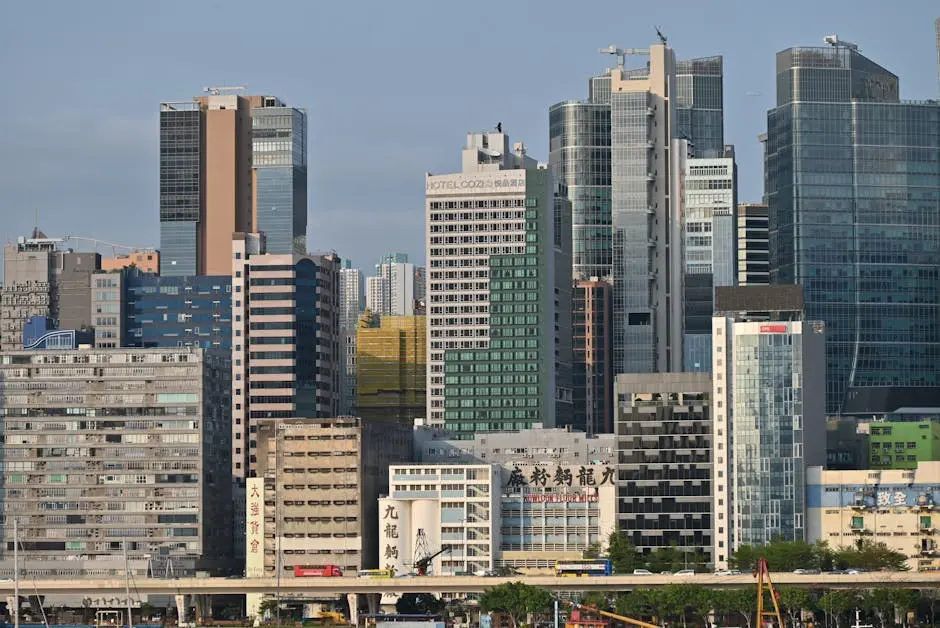12 Reasons Why Selling the City is Key to Cultural Impact
Learn 12 key reasons why selling the city is crucial for making a significant cultural impact and driving positive change in urban communities.
In an increasingly interconnected world, how we perceive and promote our cities directly impacts cultural identity and community engagement. When cities prioritize selling their unique narratives and attractions, they not only enhance their economic vitality but also enrich their cultural fabric. Here are twelve compelling reasons why this approach is essential.
1. Creating a Sense of Community
When cities market their unique features, they create a sense of belonging among residents, fostering community spirit and pride. This communal connection is not just about residents having a place to live, but about them feeling an integral part of something larger. By sharing resonating stories, cities empower their residents to take ownership of their environment and actively participate in its development.
Furthermore, celebrating local achievements and stories enhances this sense of community. When a city showcases the accomplishments of its residents, whether through events, exhibitions, or social media channels, it cultivates a positive image that residents can rally around. This strengthens community bonds and encourages individuals to contribute to the city’s narrative, making it a dynamic participant in the cultural landscape.
2. Driving Economic Growth
Engaging narratives about a city can attract tourists and businesses alike, boosting the local economy and creating job opportunities. By effectively marketing a city’s unique sellable attributes, like vibrant neighborhoods or culinary delights, cities can draw visitors looking for authentic experiences. This influx of attention can lead to new businesses and existing ones thriving, creating a more robust local economy.
Additionally, the economic impact of selling the city extends beyond tourism. Crafting a compelling identity can entice investors who are looking for promising ventures. A city known for its cultural vibrancy and innovative spirit becomes a magnet for startups and established companies, further enhancing economic development and stability.
3. Preserving Cultural Heritage
Highlighting historical sites and traditions encourages preservation efforts and maintains a city’s cultural legacy for future generations. When a city showcases its rich history, it honors the past and instills a sense of responsibility among residents to protect what makes their city unique. This is especially critical in a rapidly changing world where urban development often overshadows historical significance.
Moreover, incorporating cultural education into city marketing can foster an appreciation among residents and visitors. Engaging exhibits, guided tours, and public art installations can educate and inspire, blending the past with present narratives that resonate with everyone. In this way, careers in cultural preservation and education fields also gain momentum, resulting in a fuller understanding and appreciation of our shared heritage.
4. Enhancing Tourism Experiences
Effective storytelling can enhance tourists’ experiences, making them more likely to explore and appreciate the city’s offerings. A well-crafted narrative can serve as a guiding thread, leading visitors through significant locations and providing context that enriches their journey. The result? Tourists leave with memories and a deeper connection to the city itself.
Tailored experiences such as art walks, food tours, and historical reenactments add layers to the visitor experience. These activities are not just attractions; they are opportunities for engagement that make leisure time both enjoyable and educational. Such immersive experiences can turn a single visit into lasting admiration, encouraging visitors to return, bringing friends, and further embedding the city into their personal stories.
5. Fostering Artistic Expression
By promoting local art, music, and cultural events, cities can inspire creativity and artistic expression among their residents. A vibrant arts scene attracts visitors and creates a strong sense of identity within the community. Artists who are supported and showcased enrich the cultural fabric, allowing various voices and perspectives to be heard.
Moreover, public art installations and festivals catalyze dialogue and collaboration among residents. These events can spark creativity and innovation, transforming ordinary spaces into hubs of artistic exchange. This revival of creativity benefits artists and cultivates a culture of appreciation and participation, leading to a more engaged citizenry.
6. Encouraging Civic Engagement
When citizens feel connected to their city’s story, they are more likely to participate in community initiatives and local governance. Understanding what their city stands for—and the narratives that define it—empowers residents to take a proactive stance in fostering positive change. A well-told city narrative can ignite passion, prompting individuals to advocate for improvements or support local causes.
Engagement can take many forms, from attending town hall meetings to volunteering for local projects. When residents feel heard, they become active participants in shaping their community’s future. This not only enhances civic responsibility but reinforces a sense of ownership over their city’s cultural and social dynamics.
7. Connecting Generations
Promoting local history helps bridge the gap between generations, allowing for shared experiences and mutual understanding. When cities spotlight their historical narratives, younger generations gain insight into the cultural legacies that shape their identity. This shared understanding fosters conversations, creating strong connections that transcend age gaps.
Intergenerational programs—initiatives that bring together people from different age groups—can deepen this connection. Such programs encourage storytelling, where seniors can share their experiences and wisdom while youth contribute fresh perspectives. This reciprocal exchange enriches participants and helps weave the fabric of a cohesive community.
8. Attracting Talent and Innovation
Vibrant and well-promoted cities become attractive to skilled professionals and innovators seeking dynamic environments. Young professionals often gravitate towards cities that offer both cultural experiences and career opportunities. When a city effectively markets its strengths—whether in technology, the arts, or education—it signals to potential talent that it is a place to thrive.
The presence of a creative community can act as a catalyst for innovation, encouraging entrepreneurial ventures and collaboration across sectors. When culture and commerce intersect, cities experience growth in various industries. This melding of talent and tradition creates a robust economy that is sustainable and adaptable to change.
9. Building Global Relationships
A well-sold city can build international relationships, leading to cultural exchanges and collaborative opportunities. When cities present themselves as open and culturally rich, they attract global partnerships, making them key players in international arenas. This fosters tourism and cultural diplomacy, enriching mutual understanding among different peoples.
Sister city programs often emerge from these relationships, allowing communities to share resources, ideas, and culture. These exchanges contribute to a global network of support and collaboration, positioning cities as leaders in cultural diplomacy that extends far beyond their borders.
10. Promoting Sustainability
Highlighting green initiatives and sustainable practices can attract environmentally conscious visitors and businesses. As awareness about climate change grows, cities that prioritize sustainability enhance their appeal and lead by example. Marketing these practices illustrates a commitment to the future, attracting like-minded individuals and organizations.
In addition, featuring local eco-friendly initiatives can leverage tourism to benefit both the economy and the environment. From sustainable travel options to local produce and crafts, cities can create a narrative that reflects a commitment to preserving both their cultural and natural environments.
11. Encouraging Inclusivity
A city that shares diverse stories becomes a welcoming place for all, celebrating its multicultural population. Inclusivity enhances cultural richness and fosters a sense of belonging among all residents. By recognizing and promoting diverse voices, cities can create an environment where everyone feels represented and valued.
This can involve community organizations, events, and outreach that include underrepresented groups. An inclusive city is not just a contemporary ideal; it’s essential to building a unified community that thrives on diversity and cooperation.
12. Creating Memorable Experiences
When cities craft memorable experiences through strategic storytelling, they leave lasting impressions on visitors. Experiences such as themed festivals or historical reenactments entertain and educate, providing insights into the city’s journey and character. These moments capture attention and create a connection that can translate into lifelong memories.
Ultimately, memorable experiences will encourage visitors to share their stories, forming a broader narrative promoting the city. Word-of-mouth recommendations can become powerful marketing tools, as past visitors speak to the encounters they cherish. This ongoing cycle amplifies the city’s reputation in ways that attract new visitors eager to create their own memories.









